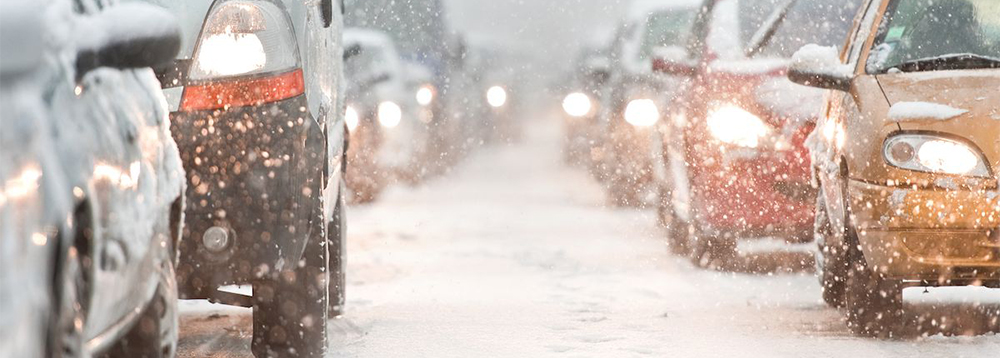
Snow, ice, storms, flooding and fog make winter the most challenging time to drive on our roads.
To help you stay safe, Toyota has shared these winter driving tips…
Driving tips for snowy and icy roads
- If your car has a control setting for snow or ice, use it. This will reduce torque to the driven wheels, reducing the chance of wheelspin.
- In a manual car, be gentle with the clutch so that power is delivered to the driving wheels more smoothly, reducing the chance of skidding.
- Be gentle with the throttle. In a front-wheel drive car, too much acceleration on a slippery surface will cause understeer, resulting in the car not turning as much as it would with the usual amount of grip. In a rear-wheel drive car, however, too much acceleration will make it oversteer, which is where the rear of the car exaggerates the steering input and slides out.
- If grip is lost and you go into a skid under gentle acceleration, take your foot off the accelerator and steer in the direction of the skid. But if grip is lost under gentle braking, keep steering in the direction that you want to travel and the anti-lock braking system (ABS) will pulse the braking effort to try to maintain that course.
- The ABS is designed to help you both brake and steer at the same time. To work effectively the system needs to sense grip on the road surface, so in icy or slippery conditions you should reduce speed and brake gently, keeping your eyes focused on the point you want to reach. Modern car technology is improving all the time; for example, the RAV4 Hybrid’s electric AWD-i system has been reengineered and enhanced to provide much stronger performance in challenging conditions and secure handling on slippery surfaces. It also has a new automatic limited-slip differential control – Trail Mode – which ensures the best possible grip and control on low-grip surface.
- If you have a crash mitigation system, such as Toyota Safety Sense, try to keep your car’s radar sensors and forward camera free of snow and ice, as this might obscure their ‘vision’ and stop them working correctly.
- Consider fitting cold weather tyres, which dramatically improve grip and stability when ambient temperatures are less than seven degrees Celsius. Note that the advice given above is valid whether winter tyres are fitted or not.
Driving in rain and on flooded roads
- Rain reduces your visibility and increases stopping distances, so it’s advisable to double the distance between your car and the vehicle in front.
- Use your headlights whenever visibility is reduced, not just at night, in accordance with the Highway Code.
- Regularly check your lights and the condition of your windscreen wipers and replace any defective bulbs and blades as necessary.
- Should the steering begin to feel light or unresponsive due to rain or standing water, ease off the accelerator and slow down gradually.
- If the roads are flooded, avoid areas of deep water, which is usually by the kerbs. If you do decide to pass through standing water, drive slowly but keep your engine revs high to avoid stalling. Be aware that bow waves from approaching vehicles can increase the depth of water your car needs to deal with.
- Do not attempt to cross deep water – a car can float in as little as two feet of standing water.
Driving in fog
- Fog is one of the most dangerous weather conditions, as an accident involving one car can quickly escalate to involve others if they are driving too close. Leave a distance of at least three seconds between you and the car in front.
- Use your headlights and fog lights to increase your visibility to others.
- At junctions, wind down your window and listen for traffic.
Driving in strong winds
- When driving during high winds, be aware that sudden gusts can happen at any time. particularly on open stretches of road, through gaps in roadside hedges, or when crossing bridges.
- Hold on tightly to the steering wheel and be prepared to correct your course to stay in lane, or to avoid other vehicles and debris blown into your path
Credit : https://automotiveblog.co.uk/2021/02/stay-safe-with-these-winter-driving-tips/


